When Jim Morgan goes afield with something definite in mind, searching a particular subject in a particular setting that will “make” a painting, he’s almost always brought to ruin. Far better, he’s learned, simply to go and take what comes, staying open to possibilities, trusting in serendipity as an article of faith. If you put yourself in the right places in the right frame of mind—keeping alert, taking pains to notice even the smallest, seemingly most insignificant details of the environment—over time you’ll be rewarded.
On this misty afternoon in the Cache Valley, where Morgan’s made his home since he came to Utah State as an art student in the 1960s, it’s beginning to look as if he’s violated his own precept. He set out with something definite in mind—water clear enough to give us a fighting chance of fooling a trout—but snowmelt in the high country has turned the streams into lumpy, swollen torrents. At every bridge and crossing where we stop to look, what we see resembles foamy chocolate milk.
So we drive deeper into the mountains, gaining elevation, hoping to get lucky and find a feeder that’s still running clear. We pass brooding slopes steepled with black timber, sheer escarpments of naked, terra-cotta colored rock, lush green pastures dotted with cattle. Still mantled in snow, the peaks of the Wasatch Range play hide-and-seek, looming brightly for a moment only to fade behind the tattered clouds, as elusive as fragments of a dream.
It’s a chilly day—the temperature’s in the 50s—but Morgan drives with his window down. This, you learn, is s.o.p. for him, not so much because he likes to breathe fresh air (although he does) but because the glass mediates his view. It distorts the colors, flattens the light, muddies the details. The list of objections goes on.
This may strike you as trivial, an exercise in advanced hair-splitting, but to Jim Morgan it’s all-important. What you have to understand is that few people see the way he does—very few. The world simply looks different to him than it does to the rest of us, vastly more variegated and nuanced, its differences subtler and more finely shaded. He will say “Look at the blues in that grass” or “Oh, my God, can you believe the golds on that hillside?,” and you will stare, baffled, at what appears to be an undifferentiated expanse of color. Or at least you will at first. But then, your dozing senses prodded awake by the toe of Morgan’s boot, it will gradually dawn on you that, for crying out loud, there really are blues and golds, all kinds of them, and why haven’t I ever seen them before?

It’s a revelation, an epiphanic moment, like tasting what a connoisseur tastes when he drinks a vintage wine, or hearing what a conductor hears when a great symphony is played. In the same way that a palate or an ear can be educated, Jim Morgan, during a lifetime of observing the natural world from every angle and in every season, has educated his eye to an almost supernatural degree.
Finally, in a remote corner of an alpine ranch owned by a friend of his, we find a single pool of clear water, a spot hardly bigger than a bathtub at the mouth of a gurgling feeder. It’s not much, but at this point we’re inclined to grasp the slimmest straw. After clambering over a fence and mucking through the dense streamside willows, Morgan casts his fly. We’re hoping for the flash and quick fierce tug of a gemlike native cutthroat—a fish whose evanescent beauty Morgan has celebrated often in his art—but the fly swings through the pool untouched.
Several subsequent casts achieve the same result, so we hike upstream. Another thing you should know about Jim Morgan, in addition to the fact that you need to bundle up when he’s driving, is that he walks like a field hand who’s late for dinner. He’s not terribly tall or long-legged—I’d peg him at a hair short of six feet—but he’s fit, and country strong, and if you don’t pay attention and keep up he’ll leave you in the dust.

Now, standing on a high bank above the creek, its flow sluicing through a bed of polished stones and the landscape in all its corded muscularity reaching to those mountains in the clouds, Morgan revisits a topic from an earlier conversation. He’d been talking about teaching, and how he’s resisted giving workshops. He has no “system,” he’d shrugged, no set routine; painting for him is a very intuitive, even spontaneous process, a process directed by pulls and pushes that are never precisely the same and that Morgan is hard-pressed simply to articulate, much less explain to students who are hanging on his every word.
“What I would like to do,” he says, weighing his words with care (language is not something Morgan dispenses unnecessarily), “is do a workshop on seeing. We would find a place like this, set up some chairs, and spend the day learning to see. The colors, patterns, and abstract forms of the landscape, how they interact and change as the light changes—those kinds of things. No paint kits, no sketchpads, no cameras, just our eyes. I think that would be valuable—a lot more valuable than anything I have to say about how to mix paint.”
On this particular day, though, even the eyes of Jim Morgan couldn’t find us any trout.
For more on Jim Morgan and his art, visit www.jimmorganartist.com.




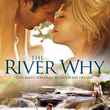
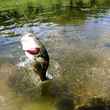




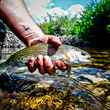
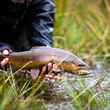



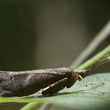
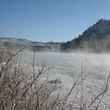



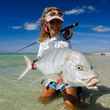
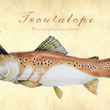



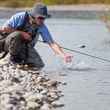
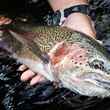

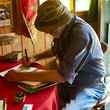
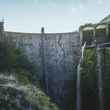
Comments